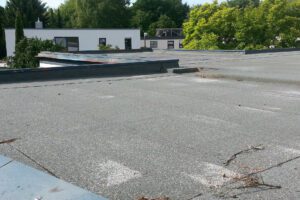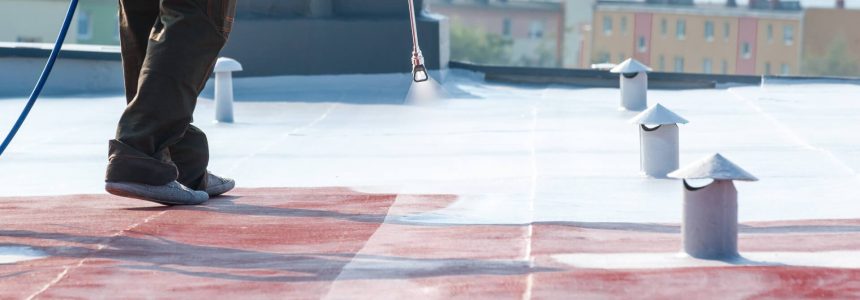

Renovating a roof made of metal or felt doesn’t have to be the challenge it first appears. The use of modern technology, especially fluid-consistency materials, means that updates are not only fast but also exceptionally effective. Proper sealing details, such as joints, dictate the condition of the roofing for years to come.
Felt remains one of the most popular roofing materials in the UK. Its quality and correct application are crucial for safeguarding buildings from moisture. While felt has its advantages, mainly its cost, its protective quality gradually decreases over time. The initial properties of the material fade, and the material itself deteriorates. Often, it remains unchecked for long periods, as roof inspections occur infrequently and are usually out of sight and mind for building occupants or responsible entities. An incorrectly laid or technologically outdated felt that has lost its protective properties noticeably loses its elasticity and waterproofness – the key attributes of a reliable roofing material.
Felt roofs, particularly popular in buildings from the 60s and 70s but still favoured today in structures like holiday homes, are typically found on entirely flat-roofed buildings. Back then, decisions were largely cost-driven. A lack of updates has meant thousands of buildings, from classic detached homes to multi-residential buildings, are still covered with felt. If it’s regularly maintained, its condition shouldn’t raise major concerns. Unfortunately, in most cases, felt roofs were seldom inspected.
The three-layer structure of felt has varied applications. The core part, known as the “carrier layer,” protects the roof from excessive heating and mechanical damage. Although torch-on felts have much better technical and resistance properties than materials used in the past, they too are susceptible to damage.
Mainly because felt isn’t only threatened by lingering moisture. The sun also has a negative effect. Sun rays break down the hydrocarbon chains of the top layer into smaller elements, leading to the characteristic cracking of the felt roof. The combination of water and sunlight gradually diminishes the quality of the protective layer.
Usually, felt roof renovation takes place only after the first problems are noted – leaks, dampness, emerging bubbles, and cracks. However, the condition of a bituminous felt roof should be verified annually, with maintenance performed every few years depending on the properties of the layer – typically every three to five.
Bubbles on the roof, cracks in the cover, or noticeable roof leaks are signals that rapid repair or a new coat is essential. A new covering will be necessary when these bubbles are not isolated but form a constant, dense structure. More than a dozen of such roofing irregularities is a reason to consider a roof replacement. Replacement is also crucial when the roof surface is significantly cracked or has separations. In the case of emerging fissures and the moisture they gather, vegetation might even start to grow on the roofing – a definite sign of a leaky covering.
In these situations, a new roof covering is essential. A new felt roof or the latest solidifying roof masses ensure optimal protection. Importantly, the old felt can remain in place. Its disposal adds extra costs which can be avoided this way. Even with its age-related quality flaws, it can serve as a good base for the new layer. The existing covering can also stay in place for renovation, like using the liquid membrane HYDRONYLON®.
The same goes for the renovation of a flat metal roof – considered as such when the slope doesn’t exceed 20 degrees. Due to their design, flat roofs must have exceptional waterproofing in case of standing water.
A sealing membrane that creates a protective roof layer is the ideal solution in both cases – whether for a complete roof replacement or just renovation and modernization of roofing covers. It provides effective protection not just for felt roofs but also for metal or polyurethane foam ones. HYDRONYLON® – a product that meets all safety standards and is compliant with the highest environmental benchmarks – is applied in a liquid form, which, after solidifying, forms a compact covering devoid of gaps, cracks, and other potentially crack-prone elements. As a result, the created membrane serves as an effective material for local sealing and roof renewal. Moreover, it’s used as the final layer. This top-notch covering not only preserves the felt or metal roof but works comprehensively. It forms a new protective layer, and thanks to the versatility of HYDRONYLON®, it also seals roofing elements – chimneys, drains, hatches, skylights, gutters, and all expansion spaces. Consequently, HYDRONYLON® ensures protection of both the covering and structural parts, significantly enhancing the building’s aesthetics. The roof, instead of leaky and often irregularly laid felt or metal, transforms into a uniformly covered, leakproof surface.